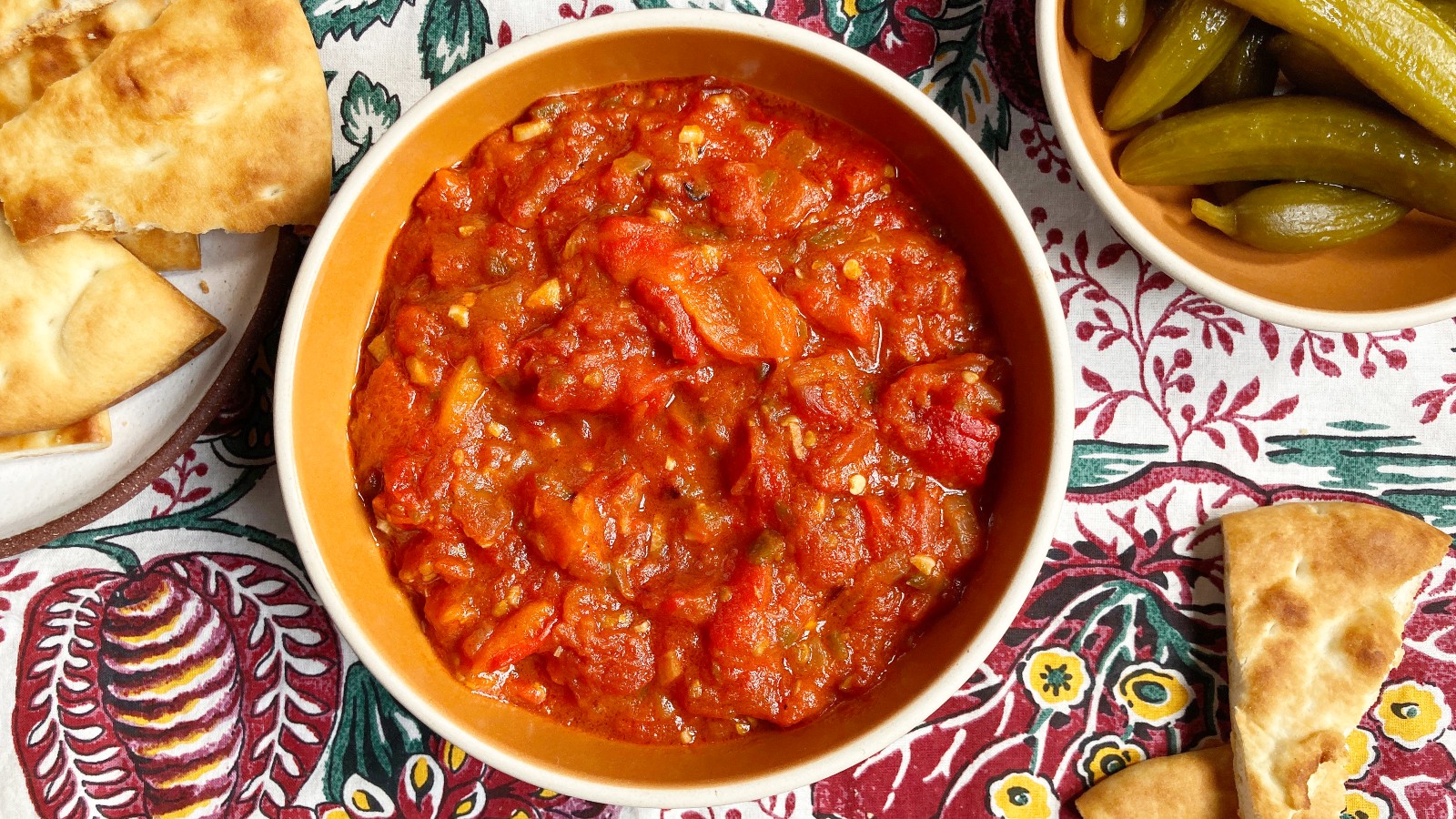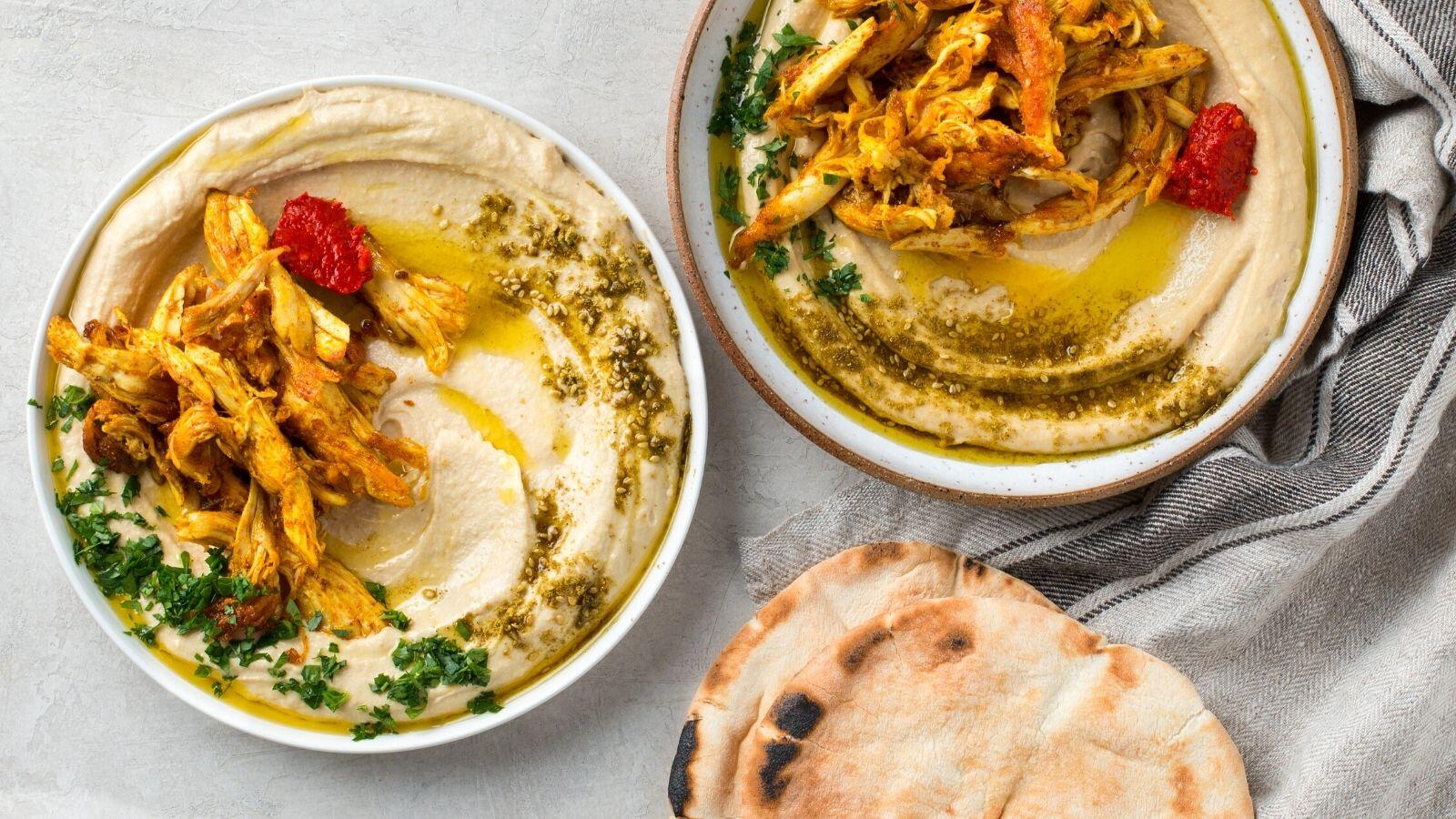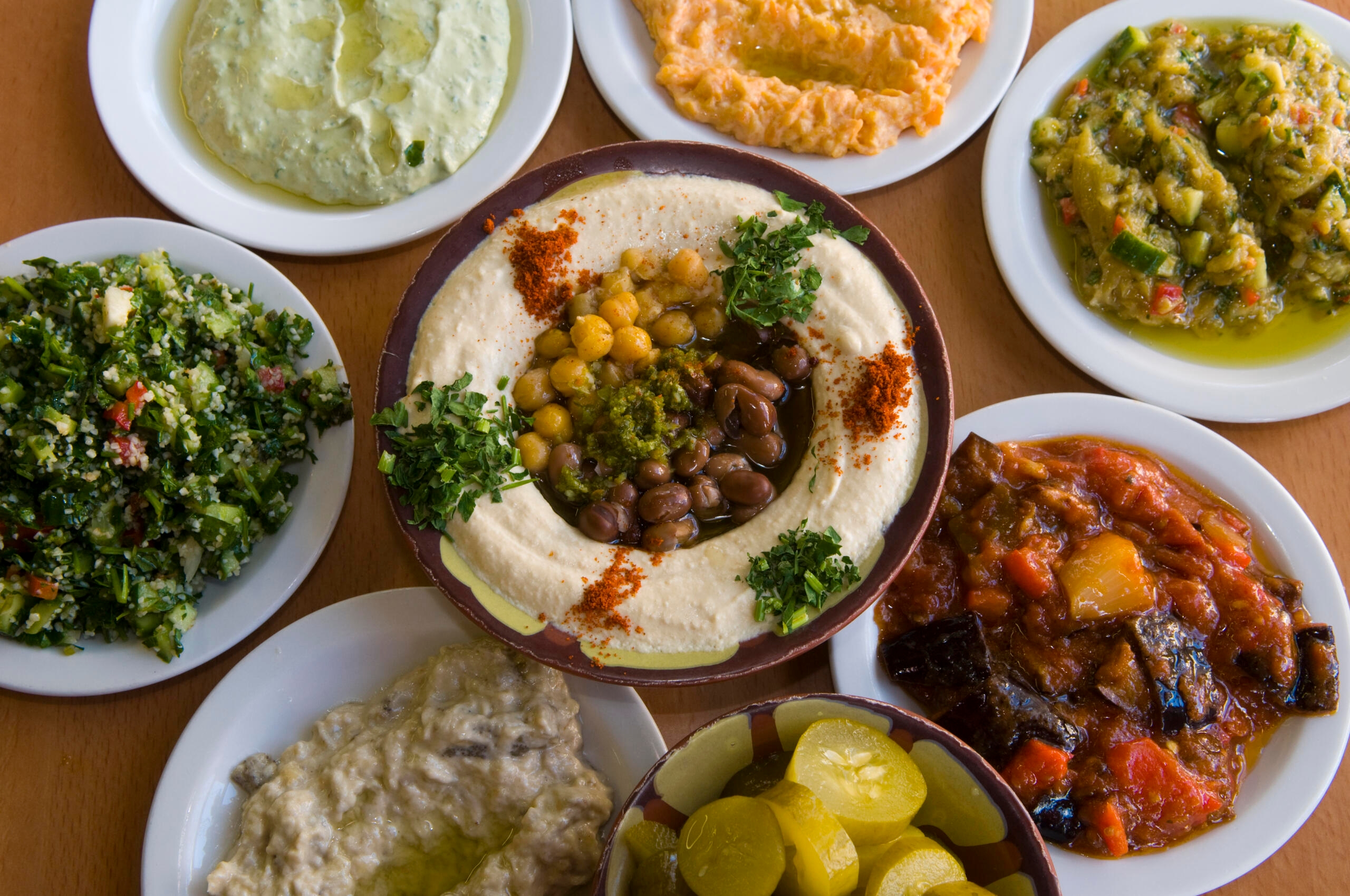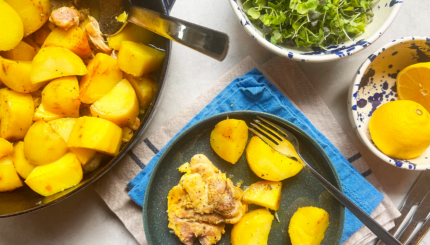Oh, the smells, the colors and tastes of Israeli salatim! Little dishes of hummus, tabouleh, fried cauliflower, Turkish tomato and eggplant salad, pickles, Moroccan matbucha with roasted peppers and tomatoes, and spicy preserved lemons — to name but a few! — jostle for room at the table, alongside fresh pita. Throughout the country, salatim, with their diverse influences, come together in a beloved food tradition that has become a uniquely Israeli experience.
In restaurants across Israel, salatim (Hebrew for “salads”) are often served for free during lunch or dinner if you order a main course. Israelis also make salatim at home, usually when feeding a crowd, like on Shabbat. This collection of small plates include raw and cooked salads, pickled vegetables, dips and spreads from across the Jewish Diaspora and Levant. They turn a meal into a communal experience.

Salatim have a complex history that is related to the complex history of Israel itself. To understand this dynamic culinary tradition and how it continues to be shaped by a wide range of sources, including the Arab-Palestinian kitchen, Jewish immigrants and Israeli technology and restaurant culture, I sought out a few food scholars and writers who are particularly knowledgeable about the Israeli food scene.
Many people assume Israeli salatim are closely related to mezze, which seems an obvious influence given the four centuries of Ottoman rule in the region (1516-1918), and the importance of mezze in Turkish cuisine. However, that’s only a small part of the story according to Ronit Vered, Haaretz food columnist and researcher.
The Nosher celebrates the traditions and recipes that have brought Jews together for centuries. Donate today to keep The Nosher's stories and recipes accessible to all.
“Today in both the Israeli and Palestinian narrative, no one… looks into what was the Ottoman influence.” Instead, she explains, Israeli salatim tend to be based around salads using fresh, local produce and, unlike in Turkey and the Balkans, there’s no tradition of hot mezze.
“Salatim are really about the cold dishes,” Vered says, “salads and all kinds of dips like hummus, baba [ganoush] and other dishes, many from the Arabic tradition.”
Ronald Ranta, a food scholar at Kingston University London and co-author of “Food, National Identity and Nationalism: From Everyday to Global Politics (Food and Identity in a Globalising World),” highlights the influence of institutional mess halls feeding large numbers of people in the period before and after the establishment of the State:
“Mess halls in public organizations like the army and kibbutzim had salads as one of the main components of meals,” he says, relating this to the high price of meat and food rationing in the late 1940s and early 1950s, when even institutional cookbooks stressed vegetarian dishes and salads.
The 1950s also was a period of massive migration to Israel with 688,000 Jews, mostly from Europe, North Africa and the Middle East, coming to Israel in the first three and a half years of the country’s existence. They brought their own food traditions that gradually influenced local culinary habits.
Then, in 1958, the first industrialized hummus was manufactured by food and restaurant innovator Moshe Karubi in a small factory in Tel Aviv. Within a decade, that hummus and other salatim such as cauliflower salad, matbucha and Turkish salad had an established place in home refrigerators — regardless of people’s culinary backgrounds or traditions.

In the following two decades, a rise in tourism introduced global influences, including the use of mayonnaise and corn, to the Israeli kitchen, which was simultaneously shaped by the expansion of agriculture providing abundant seasonal food.
In the homes of Mizrahi families, who have been in the Middle East since antiquity, a variety of starter salads have been part of meals for thousands of years. But in the late 1970s and early 1980s, restaurants serving Mizrahi food — with salatim as the first course — emerged throughout Israel.
“Mizrahi restaurants definitely played an important role,” says Ranta, “and I would also add Arab-Palestinian restaurants. One could make the argument that Mizrahi restaurants started to emerge as a response to Israelis visiting restaurants in the West Bank and Gaza Strip.”
Cookbook author Adeena Sussman describes the ensuing expansion of salatim beyond Mizrahi and Arab-Palestinian restaurants as “a United Nations of the table.” Ashkenazi dishes like chopped liver (real and “mock”) became popular in salatim offerings, as did dishes like Yemenite zhug.
These days, restaurants appealing to tourists, like on the Tel Aviv boardwalk, are known for offering an extensive variety of free salatim. But as Sussman points out, “many authentic ‘steakiyot’ and grill places offer a selection of salatim for free,” counting on patrons to order a main dish to follow.
As Vered says, “Everyone knows what you’re talking about when you say ‘salatim.’ They are part of the DNA of Israeli restaurants.”



